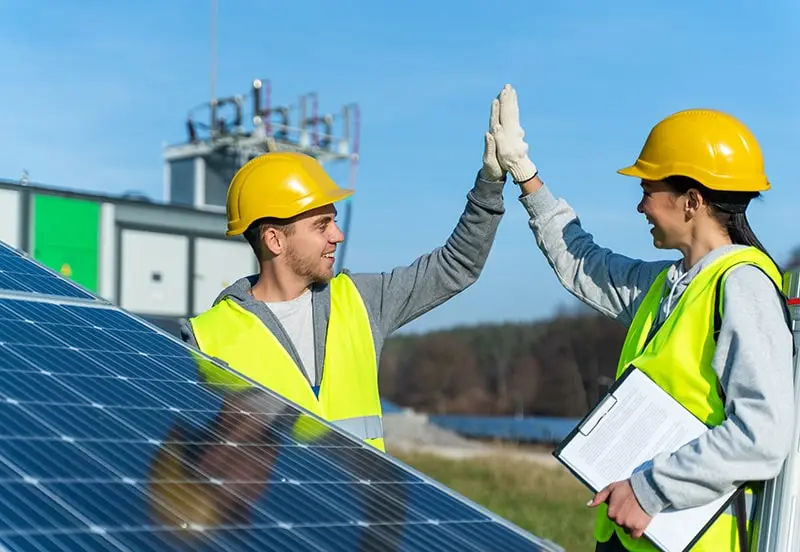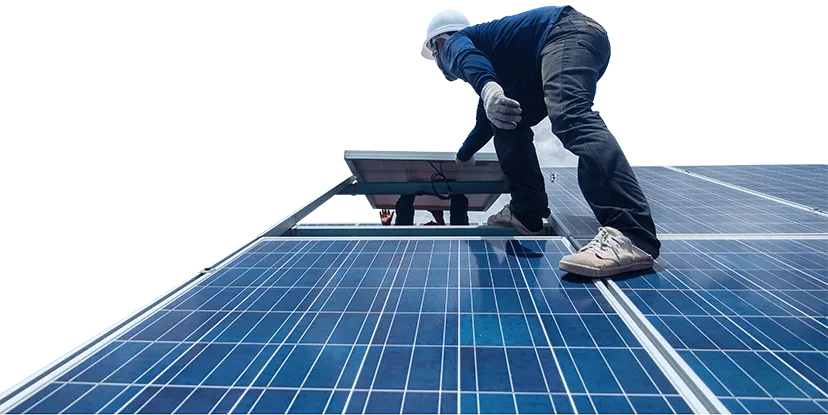System Design and Engineering
Over the last 15 Years we made impact, we have gone long a way.
System design and engineering in the renewable energy environment refers to the process of planning, designing, and engineering energy systems that harness renewable resources like solar, wind, geothermal, hydroelectric, or biomass to generate power. It involves a combination of technical, environmental, and financial considerations to ensure that the system is optimized for both performance and cost-effectiveness.
Here’s an overview of the key elements involved in system design and engineering for renewable energy projects:
- Site Assessment and Feasibility Studies
Environmental Impact Assessment: Before designing a renewable energy system, it’s critical to assess the site for its suitability for a particular renewable resource. This could include evaluating solar radiation levels (for solar), wind speeds (for wind energy), water flow (for hydroelectric), or geothermal potential.
Space and Location Considerations: Engineers assess the location, terrain, accessibility, and physical space to ensure the system will be effective. For example, in solar installations, they need to assess roof space, shading, and orientation to maximize sunlight exposure. For wind turbines, they need to consider wind conditions and possible obstructions like tall buildings or trees.
Regulatory and Permitting: Engineers also need to consider any local regulations, zoning laws, and environmental permits necessary to proceed with the design and installation of the renewable energy system.
- Energy Demand Analysis
Load Analysis: A key aspect of designing any renewable energy system is understanding the energy consumption needs of the user (residential, commercial, industrial). Engineers analyze the client’s energy usage patterns to determine the system’s size and capacity.
Peak Demand: The system must be designed to meet peak energy demand and handle fluctuations in energy use over time.
Storage Requirements: If the renewable energy system will include battery storage, engineers will calculate how much energy needs to be stored to meet the demand during off-production periods (e.g., night for solar systems or calm periods for wind systems).
- System Sizing
Solar Power Systems: Engineers calculate the number of solar panels required based on factors like the geographic location (solar radiation), the amount of energy needed, and panel efficiency. They also account for losses in the system due to wiring, inverter efficiency, and shading.
Wind Energy Systems: In the case of wind energy, engineers determine the size and number of wind turbines based on wind speed and consistency in the area. They will also consider the capacity factor (how often the wind turbine produces power) and the potential for future energy generation.
Hydropower: In hydropower, engineers assess the flow and head (height difference between the water source and the turbine) to design the system for optimal power generation.
Geothermal Systems: For geothermal energy, engineers analyze the geothermal gradient and reservoir characteristics to determine the heat extraction potential and appropriate system design.
- Technology Selection
Renewable Energy Technologies: Engineers must select the right technologies for each system, such as:
Solar Panels: Monocrystalline, polycrystalline, thin-film, or bifacial solar panels, depending on the project’s needs and location.
Wind Turbines: Horizontal or vertical-axis wind turbines, and determining the rotor diameter and tower height for optimal energy capture.
Energy Storage: Lithium-ion batteries, lead-acid batteries, or flow batteries for energy storage based on system size, efficiency, and required backup duration.
Inverters and Power Electronics: Choosing the appropriate inverters (string inverters, microinverters, or power optimizers) for DC-to-AC conversion, ensuring compatibility with the renewable source and grid connection.
- Electrical Design and Integration
Grid Connection: For grid-tied renewable systems, engineers design the electrical connection between the renewable energy system and the utility grid. They must consider local grid regulations, grid stability, interconnection standards, and the potential for energy export (e.g., through net metering).
Microgrids: In some cases, renewable systems may be part of a microgrid. Engineers design the integration of distributed energy resources (DERs) with a local grid system, incorporating both renewable generation and backup generation sources.
Protection and Safety Systems: Electrical design also involves ensuring the system is safe, with protection against overloads, short circuits, and other electrical faults. This includes designing circuit breakers, fuses, and surge protection.
Energy Management Systems (EMS): Engineers may incorporate software to monitor energy generation, storage, and consumption in real time. This allows for optimization and effective energy dispatch.
- Structural and Civil Engineering
Foundation Design: For systems such as wind turbines or large-scale solar installations, structural engineering is essential to design the foundations that will support the equipment in varying environmental conditions (wind loads, snow, seismic activity, etc.).





